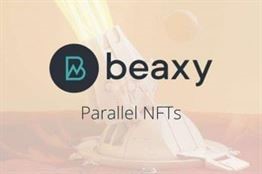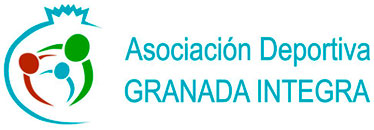Content
Representative money is also produced by the government, but unlike fiat money, it’s backed by a physical commodity. There are different forms of representative money, such as credit cards and checks, which represent an intent to pay. The advent of cryptocurrencies has spurred a debate about the future of fiat currencies and whether they’ll ultimately give way to digital coins. Cryptocurrencies such as Bitcoin aren’t fiat money because they aren’t issued, controlled, or backed by any central authority. And in some cases, the total maximum supply is designed to be capped at a certain amount.
The gold standard has a long and complicated history in the U.S. and worldwide and will stay a subject for another day. Gold has existed as a form of money, whether a commodity or fiat, for as long as humans have known about gold. In our eyes, it has achieved a value that transcends all other store holders of wealth. And the list could go on and on; think back to yourself as a kid, and you used to swap toys, books, games, or baseball cards. These create a form of commodity money because you placed a value on that item and used it to trade with your friends. The use of commodity money can be compared to trading of items.
Fiat Money Vs Commodity Money
The fact that fiat money is not connected to tangible assets, such as a national stockpile of gold or silver, means that it is susceptible to depreciation due to inflation. During some of the most severe occurrences of hyperinflation, such as the period after World War II in Hungary, the inflation rate might more than quadruple in a single day. The disadvantages of commodity money led to the rise of another type of money known as Fiat money. Fiat money is the type of money that is issued and regulated by the government. The most important feature of fiat money is that it has no intrinsic value of its own, it holds value only because the government issues, maintains, and regulates it. Other functions of money are to serve as a unit of account and as a store of value.
- There are even referenced instances of using a bank-like entity that would hold furs and issue paper claims against them.
- This then brings all the functions and characteristics that money has.
- All people need food, clothing and shelter, so all people value food, clothing and shelter.
- Financial investors and speculators commonly use intrinsic value as a metric to determine the quality of a potential investment.
- They each have different scores for the various attributes of money, and tend to have certain strengths and weaknesses.
In order to appreciate the conveniences that money brings to an economy, think about life without it. Imagine I am a musician-a bassoonist in an orchestra-who has a car that needs to be repaired. In a world without money, I would need to barter for car repair. In fact, I would need to find a coincidence of wants-the unlikely case that two people each have something that the other wants at the right time and place to make an exchange.
Commodity Money, Credit Money, and Fiat Money
Britannica celebrates the centennial of the Nineteenth Amendment, highlighting suffragists and history-making politicians. Britannica is the ultimate student resource for key school subjects like history, government, literature, and more. Get the latest tips you need to manage your money — delivered to you biweekly. Many or all of the offers on this site are from companies from which Insider receives compensation . Advertising considerations may impact how and where products appear on this site but do not affect any editorial decisions, such as which products we write about and how we evaluate them. Personal Finance Insider researches a wide array of offers when making recommendations; however, we make no warranty that such information represents all available products or offers in the marketplace. Check out CoinGeek’sBitcoin for Beginnerssection, the ultimate resource guide to learn more about Bitcoin—as originally envisioned by Satoshi Nakamoto—and blockchain.
Bartering was one way that people exchanged goods for other goods before money was created. Money is a medium of exchange; it allows people to obtain what they need to live. In Fiji, the local people at one time used whale teeth as money. Apparently, there are both white whale’s teeth and red whale’s teeth, and they would exchange at different values according to their scarcity. The price of all manner of tradable items would be quoted in terms of an equivalent number of oxen, meaning that cattle served as a unit of account.
… Goods were exchanged for food, weapons, tea and spices among other things. Salt used to be traded in the barter system a lot in Mesopotamia and neighbouring areas. If a person has something to sell and wants something else in return, the use of money avoids the need to search for someone able and willing to make the desired exchange https://www.beaxy.com/exchange/ltc-btc/ of items. The person can sell the surplus item for general purchasing power—that is, “money”—to anyone who wants to buy it and then use the proceeds to buy the desired item from anyone who wants to sell it. Stability of value– It should be stable in value, determined by the supply and demand for the object used as money.
The amount of active money fluctuates seasonally, monthly, weekly, and daily. In the United States, Federal Reserve Banks distribute new currency for the U.S. Early forms of bartering, however, do not provide the transferability and divisibility that makes trading efficient. For instance, if someone has cows but needs bananas, they must find someone who not only has bananas but also the desire for meat. What if that individual finds someone who has the need for meat but no bananas and can only offer potatoes? To get meat, that person must find someone who has bananas and wants potatoes, and so on.
In this way of thinking, money should be divisible, portable, durable, fungible, verifiable, and scarce. Different types of money have different “scores” along those metrics. Specifically, the society begins requiring something divisible and universally acceptable. An apple farmer, for example, that needs some tools , meat , repair work , and medicine for her children , can’t spend the time going around finding individuals that have what she needs, that also happen to want a ton of apples. Instead, she simply needs to be able to sell her highly seasonal apples for some unit, that she can use to save and buy all of those things with over time as she needs them. People spend their lives seeking money, and in some ways it seems so straightforward, and yet what humanity has defined as money has changed significantly over the centuries. This is the first article in a series that dives into the properties of money, examining historical and current examples. Both individuals and organizations that work with arXivLabs have embraced and accepted our values of openness, community, excellence, and user data privacy.

Read more about crypto deposit bonus here. In many countries with a history of high inflation, such as Argentina, Israel, or Russia, prices may be quoted in a different currency, such as the U.S. dollar, because the dollar has more stable value than the local currency. Furthermore, the country’s residents accept the dollar as a medium of exchange because it is well-known and offers more stable purchasing power than local money. The use of commodity money has been common throughout history. Coins made from precious metals like silver and gold were the standard for thousands of years. By the 18th and 19th centuries, paper currencies began to take hold, although many of them served as promissory notes to pay specific quantities of gold and silver. In biblical times, drachmasand denarii were forms of commodity money made of precious metals. The coins had specific monetary values based on their weight.
New blocks are created and blockchains are maintained by people called miners, who must solve a cryptographic puzzle that will be used to encrypt the next block. The 1st miner to solve the puzzle earns some Bitcoin for their effort. The solution is used to encrypt the next block, then the other miners use the same key to encrypt the new block and add it to their blockchain. Minors also receive a fee for adding transactions to a block.
What fiat money means?
A fiat money is a type of currency that is declared legal tender by a government but has no intrinsic or fixed value and is not backed by any tangible asset, such as gold or silver.





